Potential industrial applications for PFF
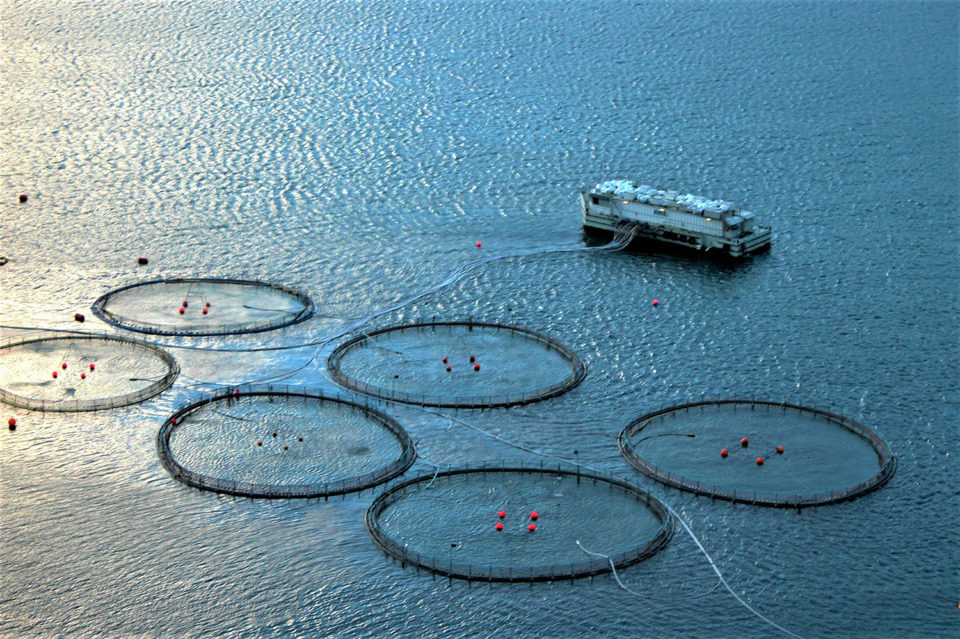
Note: This is part 2 of an article adapted and summarized from the original publication. Click here to read Part 1.
To be of industrial value, a precision fish farming (PFF) method must positively affect the day-to-day farming situation. PFF methods must therefore be evaluated to test their contributions to improving fish welfare and health, reducing fish losses (e.g. through handling, escapes and disease), improving production efficiency and product quality, and/or reducing environmental impacts of the farming operation, prior to launching innovative actions with the intent of commercialization.
Although it would be more practical to conduct proof-of-concept studies for PFF methods in controlled laboratory conditions, demonstrating their effects under full scale farming conditions is critical. Furthermore, as fish farming operations are primarily conducted outdoors, any piece of equipment or system located at the farming site will be exposed to the elements.
PFF methods should thus be tested for durability to prevent equipment malfunction when used on commercial sites. To illustrate the implementation of PFF methods, we outline four concrete examples of PFF applications that are realistic to implement given present technology readiness levels and could have a large impact within industrial fish farming. Each application covers important areas in the salmon industry, ranging from biomass monitoring and feeding to parasite management. Moreover, the examples illustrate how PFF principles can be applied to continuous (i.e. throughout the production cycle), regular (i.e. daily) or transient (i.e. occasionally, on demand) time scales.
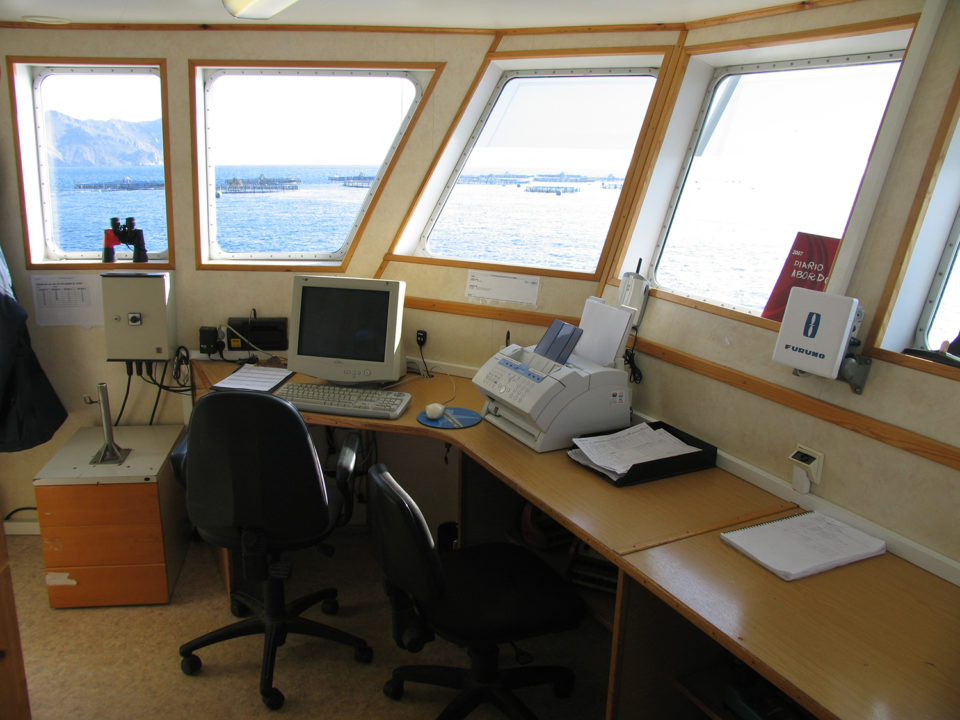
Automated biomass monitoring
Cage population properties such as total biomass, number of fish and fish size distribution in a cage are key inputs to many important decisions in the salmon production process, including the determination of medicinal dosages, assignment of proper feed rations and estimation of total production yield when selling the fish before slaughter. Although systems exist to estimate individual fish sizes and fish size distribution (e.g. biomass frames, stereo vision systems), these only provide data relevant for their location in the cage, and hence cannot deliver representative data for the entire cage population. This means that decisions where the total biomass, biomass distribution or number of fish in a cage are used as inputs partly need to rely on experience-based estimates provided by farmers rather than on a knowledge-based, objective source.
Due to their importance in central farm management decisions, the ability to predict and quantify such population properties in sea-cages has become a “holy grail” in the salmon farming industry. One way of applying the PFF principles to this challenge is to first identify the relevant feature variables. Feature variables in this case could be the total biomass in the cage, the total number of fish in the population and the individual size distribution of the population. Although recent studies have demonstrated the potential of using sonar-based solutions to monitor individual fish mass, no existing technological solutions for salmon farming are able to provide data on all these feature variables directly.
It is therefore necessary to develop solutions that derive such data by combining data on different animal variables, possibly obtained with several different technologies. One possible selection of animal variables for this purpose could be vertical distribution (sonar) and point measurements of individual size distribution (biomass frames and stereo vision systems). These variables could be combined into a variable estimating the size distribution of the population, by using echograms from the sonar to determine the vertical distribution of biomass in the cage and biomass frames and/or stereo vision systems placed at different depths to observe vertical variations in individual fish size.
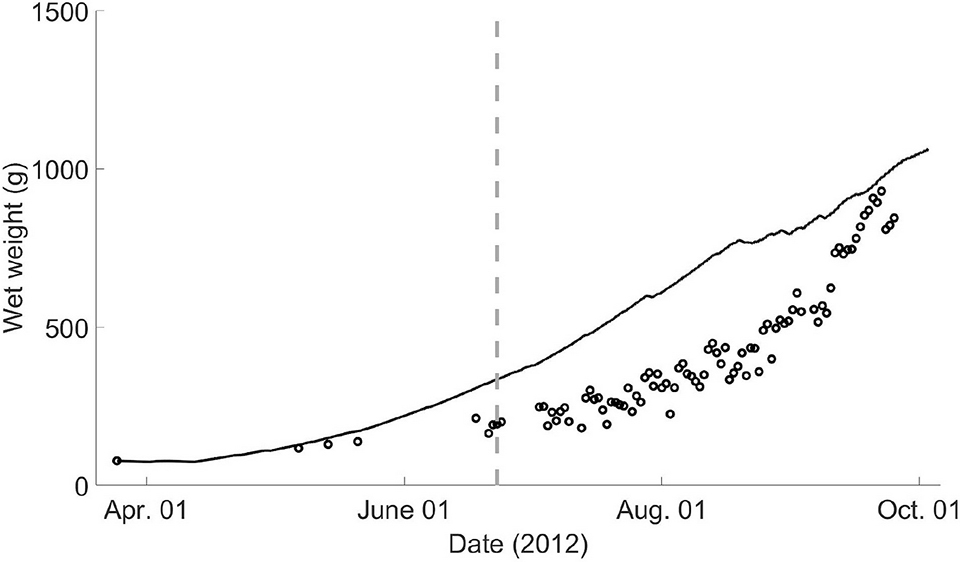
However, although this scheme would provide new knowledge on population-wide variations in size and vertical variations in biomass properties that are useful properties in their own right, no combination of these two animal variables can be used to estimate the total number of fish or biomass in the cage directly. One way of achieving such knowledge could be to combine the incoming animal variable data streams with mathematical models of the behavioral and growth dynamics of salmon in an estimator structure. If the model is fed sufficiently detailed data on the external factors tied to the environmental (e.g. temperature levels, sea-states) and management-related (e.g. feed delivery rate) states in the cage that influence fish growth, it can estimate the growth dynamics in the cage.
Automated feeding strategies and control
The objectives of feeding processes in commercial salmon sea-cages are to ensure that every fish is provided with sufficient feed to maintain desired growth rates and keep feed loss to the environment at a minimum. Since these two aims often conflict (i.e. overfeeding may give good growth rates but may result in more feed spillage and vice versa for underfeeding), this is an everyday trade-off in the industry that has consequences for both fish welfare and farm economy.
Feed cost accounts for about 50 percent of total production costs from egg to marketable fish and is thus the most significant single expense in salmon production. Feeding strategies in salmon production are largely based on feeding tables that suggest feed amounts as a function of population size and temperature. In addition, farmers tend to use submerged cameras aimed at the feeding area to manually monitor the feeding activity of the fish and adjust the feeding rates accordingly if they interpret the fish to be less responsive towards the feed or otherwise indicate lowered appetite. Although this improves the association between feed delivery and the biological processes in the cage, the interpretation of the fish responses is experience-based, and hence depends on the experience and skills of the individual farmer.
This method has been demonstrated to occasionally lead to good growth rates and feed-conversion ratios, but the outcomes will vary much between operators and sites. Furthermore, for locations in remote or exposed (with regards to wind, current and waves) locations it may not be possible for personnel to be present every day. For such locations, fully automated or remotely controlled feeding is crucial for a farm operation.
Better precision and monitoring tools in feed delivery to salmon cages would improve the predictability and observability of feed consumption in the fish population, which in turn could enable reductions in production costs and environmental impacts while improving growth. This could be solved by applying the principles of PFF to shift feeding management from comprising largely experience-driven processes to become a more knowledge-driven procedure. Suitable animal variables for this application could be vertical distribution and movement (of individual fish and fish groups), and individual swimming behavior (e.g. speed and direction), both of which are influenced by the feeding motivation of the fish.
Available technologies to observe such variables include sonars (vertical distribution), computer vision techniques (swimming speed, direction and acceleration through optical flow and motion pattern analysis techniques and acoustic telemetry (depth movements and activity levels). Although it is possible to derive Feature variables reflecting the appetite or feeding motivation of the fish based on the data provided by each of these technologies alone, it is possible that a more reliable and precise indicator would combine information gained from several technologies.
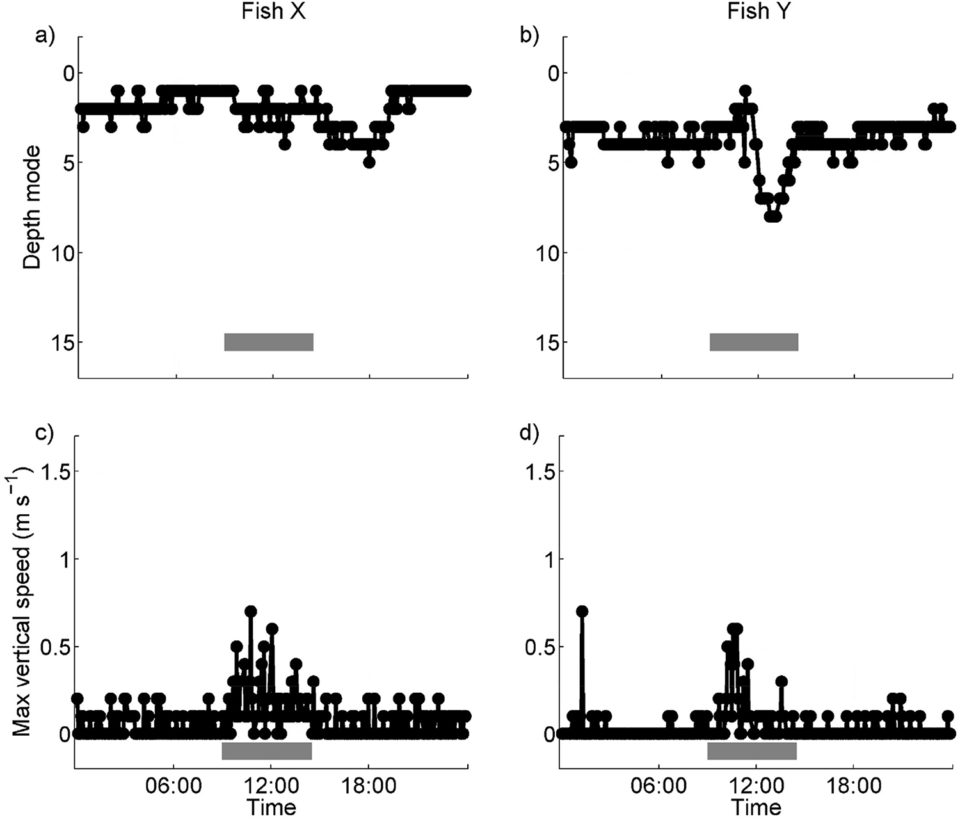
Moreover, the importance of efficient feed use for the overall profitability of any salmon farming enterprise renders the extra investments required to achieve a feature variable that combines several animal variables from different sources worthwhile, granted that the increased precision leads to improved profits or reduced negative externalities. Such compound feature variables could, for instance, combine the occurrence of shifts in the vertical distribution towards/away from the feeding area with increases/decreases in individual variability in swimming direction.
To design an automated algorithm – e.g. a Decision Support System or DSS – that uses selected feature variables to provide advice on whether or not the present feeding regime should be adjusted requires that datasets for the chosen feature variables be collected for both feeding and non-feeding periods. The algorithm could then compare present trends and state values of the feature variables to those previously observed during different phases of feeding (i.e. beginning, midway through and towards the end of the feeding period), and while feed is unavailable to identify which state the fish are in with regards to feeding response.
Since automated feeding systems are used throughout the salmon industry today, the final stage of PFF applications aimed at feeding operations simply entails feeding the output from the automated decision-making algorithm into the feeding system. With the development of more complex feeding systems, feed placement could also be optimized spatially, based on derived feature variables. Depending on the present location of fish within the sea cage, direction and speed of the water flow, feed could then be placed further upstream to reduce feed loss and increase availability for the fish.
Automated monitoring of sea lice levels in salmon farms
Norwegian salmon farms are legally required to regularly report sea lice levels in their cages. Sea lice levels are assessed manually by counting the number of lice attached to a selection of individual fish retrieved from approximately half the cages on the site, and then finding the average value of the individual counts. If the average sea lice number per fish exceeds the legal limit, the farmer must promptly delouse the farm. Apart from being labor intensive and costly, the louse assessment process impacts some fish as they have to be captured, handled and sedated prior to the actual counting.
Manual counting is also subject to variable weather conditions and subjective bias, while small stages of sea lice are difficult to see and hence assumed to be strongly underestimated in these counts. Recent data suggests that salmon with more sea lice swim deeper, present counting methods are likely to underestimate lice levels. Considering the costs and labor associated with sea lice counting, and the potential consequences of having inaccurate lice counts, this operation is a good candidate for automation through PFF methods.
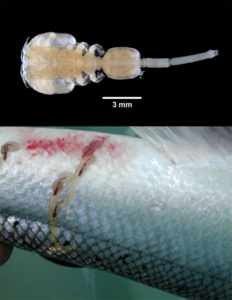
The first step would be to identify animal variables that may serve as a foundation for acquiring the desired feature variable – sea lice infestation levels. With the precondition that fish handling should be avoided, variables observable through optical methods appear best suited. For instance, researchers found that lice infestation levels could be expressed in the jumping frequency of salmon in sea cages, a behavioral trait automatically detectable using computer vision methods.
This approach is attractive as it applies video recorded using elevated cameras, making the acquisition of useful and affordable camera solutions easier than in the subsurface environment. Underwater video recordings and computer vision might also detect sea lice directly. This could be done using spectral analysis to distinguish between sea lice and salmon skin or hyperspectral analyses to detect changes in skin texture and color caused by louse infestation. While these methods would probably require more expensive equipment, they are more direct approaches to the problem rather than using surface activity as a proxy measure.
This principle is used to detect sea lice in the commercially available system, where an automated algorithm constantly evaluating the estimated sea lice numbers (feature variable) against the legally set maximum limits for sea lice infestation could then be set to alert the farmer when the detections approach levels that require action (target variable). The feature variable of this application could be combined with a mathematical model of louse population dynamics in an estimator structure to better predict population dynamics and enable better planning of delousing operations.
Automated crowding control during delousing operations
The ability to delouse salmon cages efficiently when sea lice counts exceed legal limits is critical, as uncontrolled outbreaks of sea lice may lead to impaired fish welfare and health and have severe consequences for wild salmonids in the environment near the farm. Farmed salmon populations are now subjected to a larger number of treatments during their life cycle than was the case a decade ago.
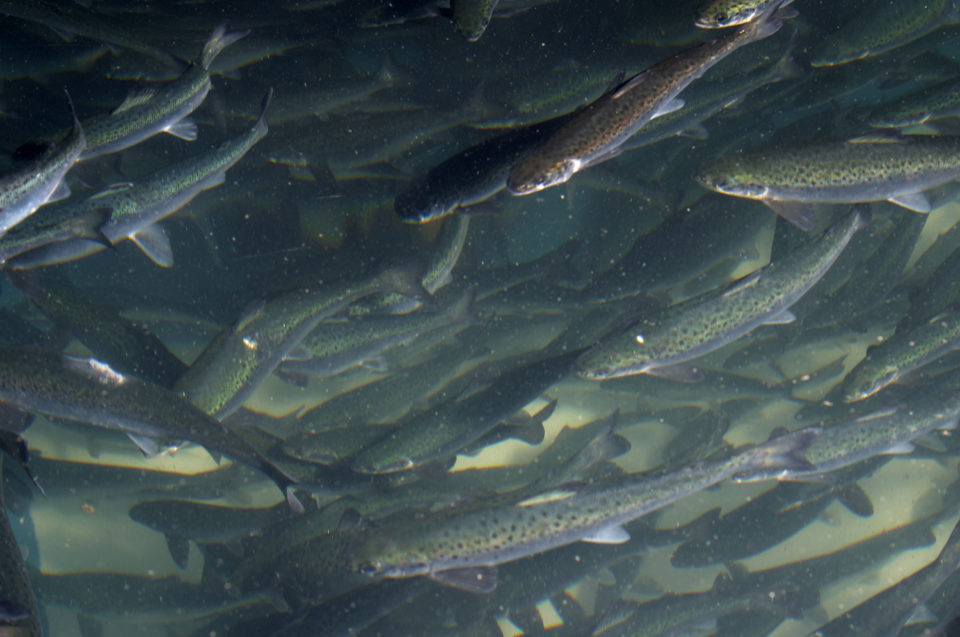
An unfortunate side effect of this development is that sea lice populations frequently exposed to medicinal treatments have undergone a survival-driven genetic selection for resistance against these substances, which in turn has rendered many of the previously most efficient anti-louse chemicals ineffective. This has forced the industry to search for alternative methods of treating their fish and it is today common to use non-medicinal treatment methods such as freshwater, thermal or mechanical delousing.
These methods often require that the fish be first crowded at higher than normal densities, then pumped from the cage, through a barge or ship that contains the system used for delousing, and back into a different section of the cage or into a new cage. When fish are crowded at very high concentrations, they may experience impaired culture conditions that induce negative effects such as hypoxia, mechanical damage, and increased stress levels. Crowding may subject the fish to lowered welfare and lead to detrimental health and increased mortality, adding to the potential negative welfare impacts caused by the delousing process. This is a considerable challenge for the salmon industry.
A PFF application that automatically monitors the states of the salmon before, during and after a delousing operation would be a tool to reduce the risks associated with crowding of farmed fish. This method could present alarm signals to the farmer if the states of the fish imply that the crowding process inflicts unacceptable stress levels or physical strains on the fish. The first step of developing the method would be to identify which technologies to use in the Observe phase. Submerged cameras coupled with computer vision algorithms could detect motion-based animal variables that hold information about stress levels, such as swimming speeds and respiration rates, and detect deviations in skin condition implying damage or sores. Another alternative could be to use sonar (e.g., Fig. 3). As for cameras, the information obtained via sonar describes the responses of sub-groups in the population.
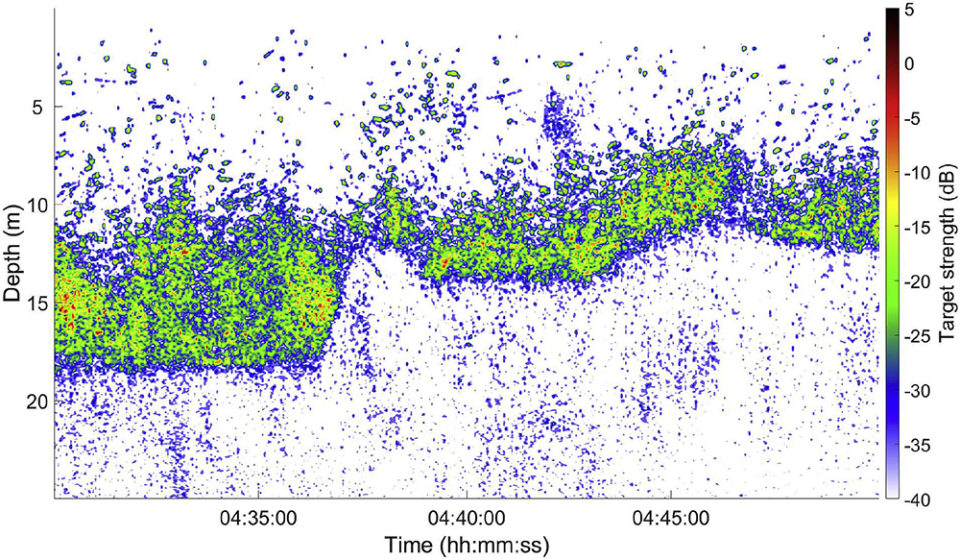
Although the group size observable with optical means is limited by visibility, sonars can cover larger sub-volumes of the cage and provide data on larger groups of fish. Irrespective of monitoring technology, a baseline dataset describing the “non-stressed” states and response patterns of the fish is required to facilitate interpretation. The easiest way to obtain such data is to monitor the fish for a period prior to the operation using the same monitoring regime as planned during crowding. Automated algorithms could then search for deviations from the data values and trends seen for unperturbed fish in the non-crowding periods, and label these as Feature variables that could imply increased stress levels.
Conclusion and recommended future research efforts
Industrial fish farming is an important supplier of marine protein for human consumption. The industry aspires to supply the increasing demand for seafood arising from the growing world population. Due to factors such as increasing scarcity of feed raw materials, limited availability of farming locations suitable for today’s technology level, increasing focus and demands with respect to eco-friendliness and space-use conflicts with other industries (e.g. fisheries, oil and gas, tourism, shipping), this challenge is probably not possible to counter by simply upscaling production volumes and applying present production regimes. Future methods for fish farming will therefore need to be more advanced and smarter, in the sense that the industry needs to shift from experience-driven to knowledge-driven approaches to better optimize production.
The present trends within the industry of farms producing greater volumes and production per worker increasing on each fish farm highlight the need to monitor and control the production process. Exploitation of technological tools will be central in addressing these challenges, and the PFF concept seeks to harness this potential in representing a framework for the development of technologically founded methods for fish farming.
Many components required to create PFF methods exist today, either as commercially available solutions or as research tools that can be converted into innovations. Primarily, these solutions are aimed at the observation phase of fish farming operations, meaning that they are designed to produce data or information on the expressions of bio-responses in the farmed fish. This is not surprising, considering that the general challenges of observing animals in the aquatic environment has been pushing the industry to adapt new technologies to observe the fish. There are also several candidate technologies for future innovations aimed at the interpretation phase, primarily in the form of mathematical models. Most of these are still research tools with limited direct industrial applications, but models are likely to become industrialized either on their own or as components of a larger system.
As production units increase in size, the ability to monitor the states of the caged population through sensors will decrease, implying that estimation through mathematical models may be necessary to make the states of the system observable. There are fewer examples of established methods or tools in the decide and act phases of fish farming. This is mainly because the realization of PFF methods at these stages will require well-established tools for the observe and interpret phases. Hence, as new tools and innovations aimed at the first two phases are realized, the possibility of developing solutions extending all the way into the act phase will increase.
Continued research on technological applications within all four phases of fish farming is necessary to realize the potential of PFF in commercial aquaculture. One approach would be to target this effort towards specific use cases, meaning that the motivation is to solve concrete challenges within the industry using a PFF approach. The case studies of sea lice counting and crowding control outlined in this study are examples of this. Such methods are more case-specific than generic, are founded in applied research, and more likely to have a strong industry appeal.
Alternatively, each phase can be targeted separately, to solve technical challenges such as refining sensor technologies for better observation of animal variables, industrializing mathematical models, developing automated DSS methods and developing autonomous systems for cage manipulation. This will require a certain amount of basic research to understand biological mechanisms in the fish better, which may have a lower immediate industrial appeal but stronger long-term effects in providing a knowledge basis for the development of future methods. Research in both these directions is necessary to usher in a new paradigm of technologically oriented fish farming through the PFF concept.
Acknowledgements
This study is the result of a strategic collaborative effort between the participating institutions and has not been funded through external grants. We dedicate this work to the late Professor Jens Glad Balchen (1926-2009), who first established the idea of applying cybernetic methods to the production and capture of aquatic organisms.
Editor’s note: This article has 14 co-authors (see tags for all author names) but only the affiliation and contact information for the first and corresponding author is listed.
References available from corresponding author.
Now that you've finished reading the article ...
… we hope you’ll consider supporting our mission to document the evolution of the global aquaculture industry and share our vast network of contributors’ expansive knowledge every week.
By becoming a Global Seafood Alliance member, you’re ensuring that all of the pre-competitive work we do through member benefits, resources and events can continue. Individual membership costs just $50 a year. GSA individual and corporate members receive complimentary access to a series of GOAL virtual events beginning in April. Join now.
Not a GSA member? Join us.
Author
-
Martin Føre, Ph.D.
Corresponding author
SINTEF Ocean
7465 Trondheim, Norway; and
NTNU Department of Engineering Cybernetics
7491 Trondheim, Norway[111,110,46,102,101,116,110,105,115,64,101,114,111,70,46,110,105,116,114,97,77]
Tagged With
Related Posts

Responsibility
Precision fish farming: A new framework to improve aquaculture, Part 1
A review of technology usage in finfish aquaculture, future application possibilities for precision fish farming (PFF) and guidelines for research.

Intelligence
‘Spatiotemporal patterns’ indicate improving perceptions of aquaculture
A study led by University of California Santa Barbara researchers has found that public sentiment toward aquaculture improves over time, a potentially important development with growing interest in offshore aquaculture.

Innovation & Investment
Eye in the sky: Europe employs satellites to advance aquaculture
Copernicus – the European Space Agency’s €4.3 billion Earth Observation System – holds potential benefits for fisheries and aquaculture. The SAFI project is approaching the aquaculture sector about harnessing, and montetizing, this unique service from up above.

Innovation & Investment
Eight digital technologies disrupting aquaculture
Eight digital technologies are disrupting aquaculture and having a profound impact on the way business operates – even displacing some established ones.


